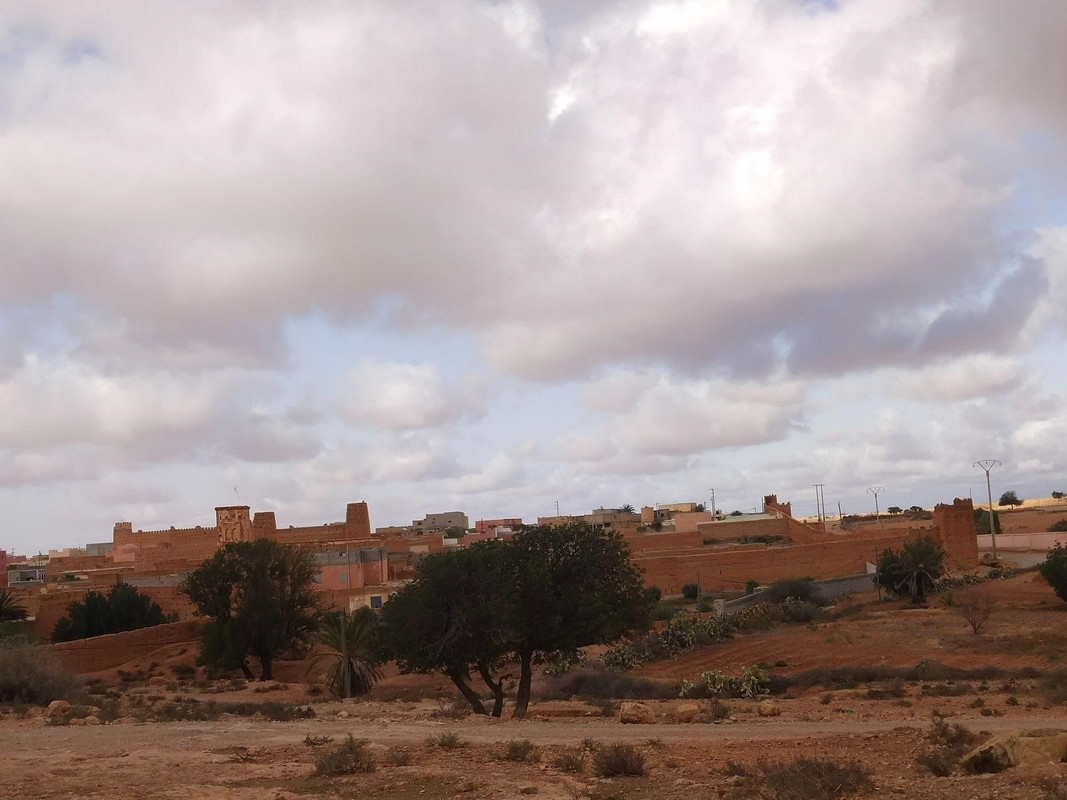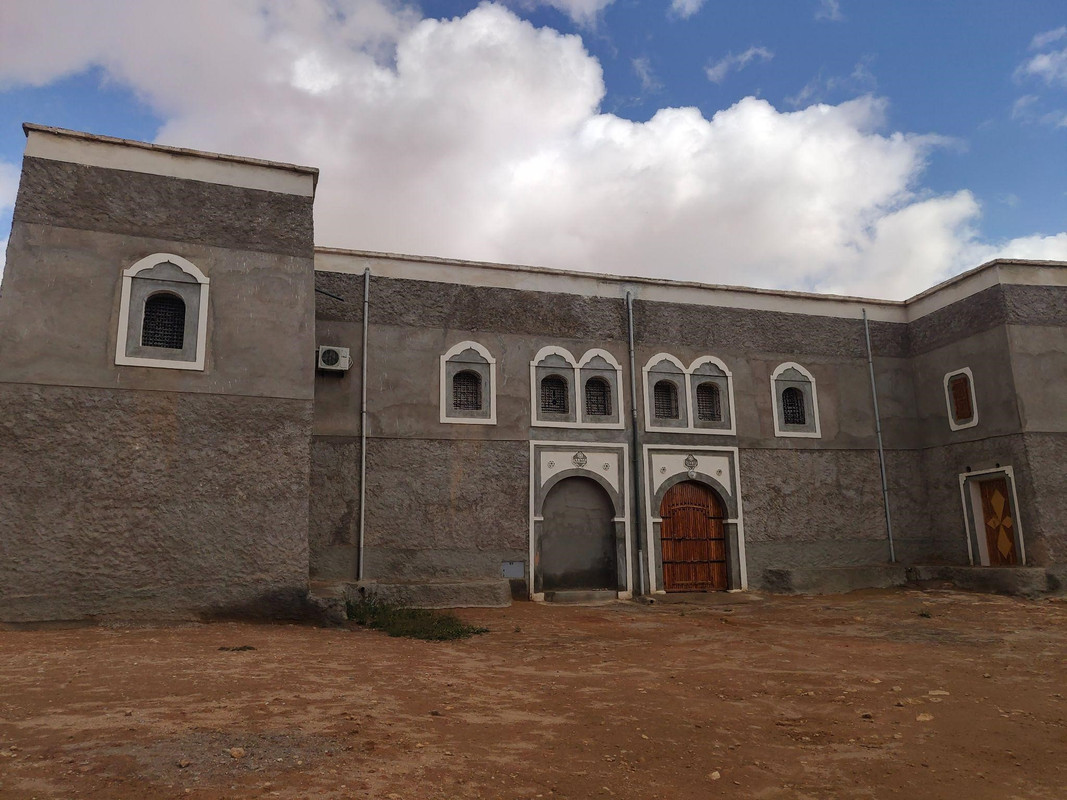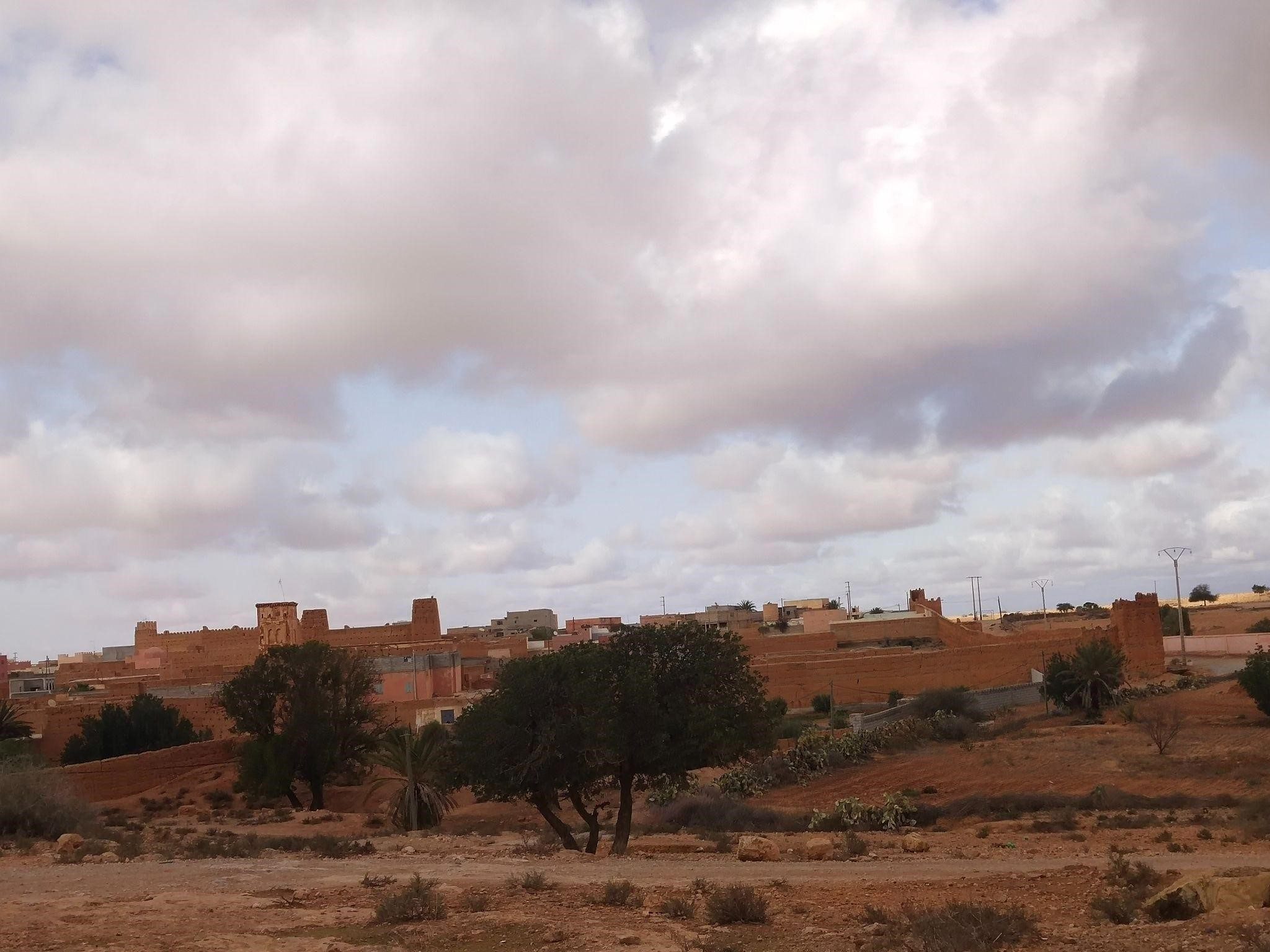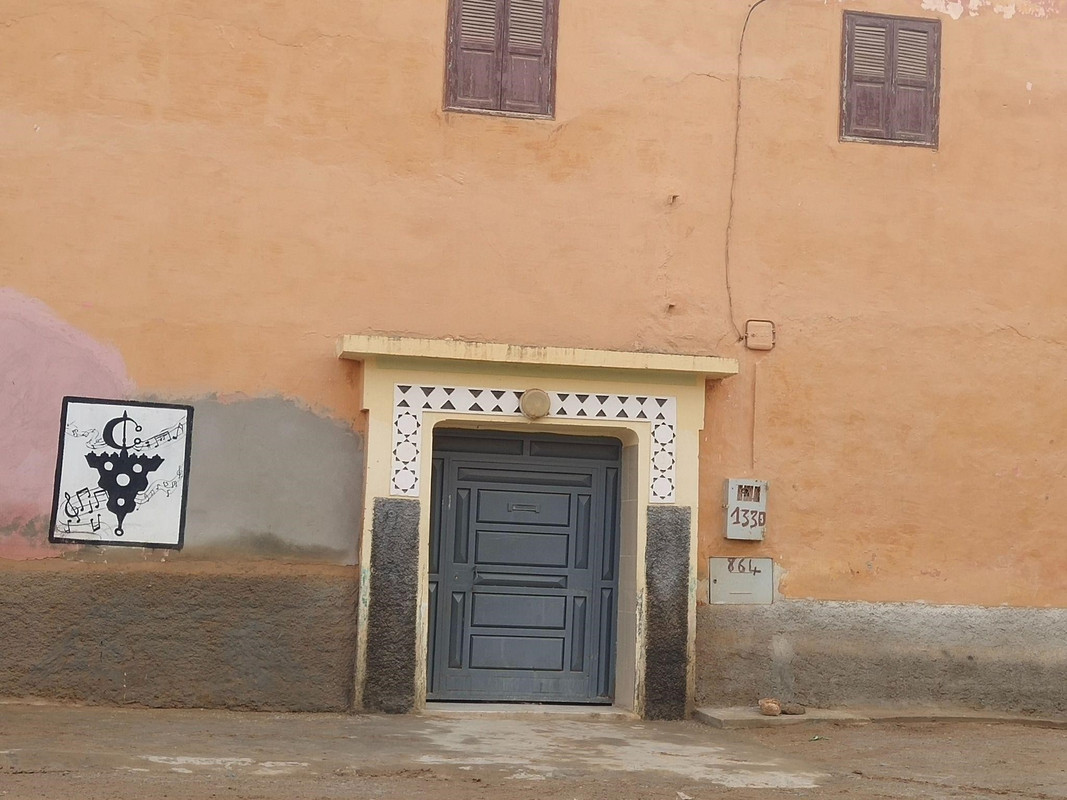Arabic Version
Heritage Month in Morocco
Talaint or Al-Ain: The Memory of the Jerraris
By Omaima Khalil Elfanne, HAF-Dakira Cultural Coordinator
Tiznit, Morocco
The Jerraris, or Oulad Jerrar, of Arab origins, hail from Sakia El Hamra. They dispersed throughout the desert and the Souss region, some of whom settled in Douar Talaint. The Jerraris and members of the Jewish community lived side-by-side and traces of Jewish life in the douar are still visible.

Douar Al-Ain or Tal Aint, Oulad Jerrar rural commune, Tiznit. Photo: Omaima Khalil Elfanne/HAF
The Jerraris settled in the Azghar plain eight centuries ago when they were summoned by Ibn Yadir al-Zakandari. They dispersed throughout the desert and the Souss region, including a group that settled in Al-Ain (Talaint in Tamazight), a fertile plain in the vicinity of Tiznit that teems with agricultural and water sources. Mr. Hassan is a native inhabitant of Douar Talaint who reveals to visitors the great history hidden behind Talaint’s walls. Despite the centuries that have passed since the Arab Jerraris settled in this area, toponymy confirms the previous Amazigh presence as some place names kept their original Amazigh appellation, such as Talaint and Ighrem.
Talaint’s architecture resemble to a greater extent Tiznit’s architectural design. Its leaders copied Tiznit’s characteristic architectural style by surrounding the village with a wall in 1901 and erecting a kasbah like Tiznit’s Kasbah of the Makhzen during the reign of Al-Kailouli (1915-1917). Researchers consider that the competition between these villages produced an urban character to their appearance, clearly evident in their enclosures, which hide a conflict between the neighboring tribes over the shared waters of Al-Ain. In 1926, a water tank was built to settle the dispute, dividing shared waters between Jerraris and Ahl Tiznit, following Sultan Moulay Youssef’s visit to Tiznit and Talaint.

One of the houses of Caid Iyad, restored by one of his nephews. Photo: Omaima Khalil Elfanne/HAF
The Caid Ayyad Al-Jarrari was responsible for a number of feats, including the Al-Ain wall—with its red doors and sixteen towers—that protected the village against attacks from hostile tribes. At the beginning of the twentieth century, following an attack by neighboring tribes, the people of Talaint spent 13 months constructing the wall. Additionally, the siege of Talaint imposed by the Illygians, led by Al-Hussein Ohashim, and the subsequent arrest and overthrow of Muhammad bin Ali Al-Jarari, led the people to wall in and fortify their village.
Jewish Amazigh from Tazeroualet lived in the heart of the old medina of Douar Al-Ain next to the house of the Caid Ayyad, who conferred on them a special status and protected them as the economic stabilizers of the douar. His action ensured its financial security since it was recognized for trade and traditional crafts. Today, their abandoned houses, as well as the cemetery located just a few kilometers away in which they were buried hundreds of years ago, attest to their historical presence in the area. In 2016, the Jewish community of Agadir restored the cemetery.
From left to right: One of the houses that belonged to the Jewish community that lived in the Douar. The Jewish cemetery of Douar Al-Ain. Photo: Omaima Khalil Elfanne/HAF
This article is part of the Heritage Month in Morocco campaign (April18 – May 18) that celebrates the Kingdom’s rich heritage, as part of the USAID Dakira Program, which is implemented by the High Atlas Foundation and its partners. The program aims to strengthen inter-religious and inter-ethnic solidarity through community efforts that preserve cultural heritage in Morocco.
The article was completed with the support of the United States Agency for International Development (USAID), and the High Atlas Foundation is solely responsible for its content, which does not necessarily reflect the views of USAID or the Government of the United States.








